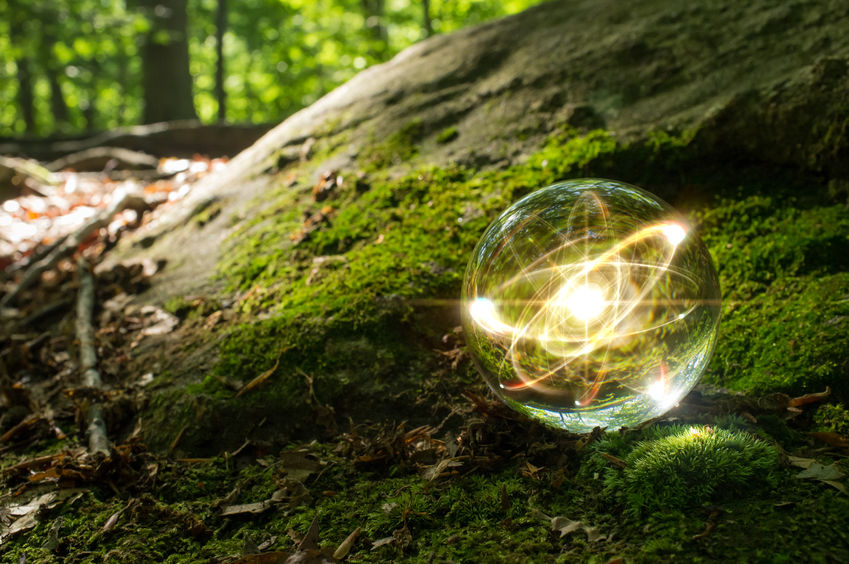
Nuclear power provides clean energy that works
By Dr. Jay Lehr
The truth about nuclear power is that it provides a viable and safe means for satisfying the world’s growing need for electricity. While the US is truly awash in oil and gas and coal as well, the rest of the world is not so lucky. Fortunately outside of the US there is renewed interest in building nuclear power plants.
Misunderstood safety concerns are beginning to fade from memory. The once well-known event at Three Mile Island in Pennsylvania resulted from faulty instrumentation that gave erroneous readings for the reactor vessel environment. After a series of equipment failures and human errors, the reactor core was compromised, and it underwent a partial meltdown.
Even so, radioactive water released from the reactor core was safely confined within the containment building structure, and very little radiation was released into the environment.
The Three Mile Island incident actually underscores the relative safety of nuclear power plants: The safety devices worked as designed and prevented any injury from occurring to humans, animals, or the environment anywhere near the its location.
Moreover, the accident directly resulted in further improvements in procedures, instrumentation, and safety systems. U.S. nuclear reactor power plants are now substantially safer as a result. Three Mile Island’s Unit One is still operating with an impeccable record.
Chernobyl an Anomaly
The worst nuclear power plant disaster in history occurred when the Chernobyl reactor in Ukraine experienced a heat (not nuclear) explosion. If such an explosion were to have occurred in a Western nuclear power plant, it would have been contained because all Western plants are required to have a containment building—a solid structure of steel-reinforced concrete completely encapsulating the nuclear reactor vessel.
The Chernobyl plant did not have this fundamental safety structure, and so the explosion blew off the top of the reactor building, spewing radiation and reactor core pieces into the air.
It was not the explosion, however, but the subsequent fire that spread radioisotopes around the area. The graphite reactor burned ferociously—which could not have happened if the plant had included a containment building from which oxygen could be excluded.
The design of the Chernobyl plant was inferior in other ways as well. Western power plant nuclear reactors are designed to have negative power coefficients of reactivity under operating conditions. This means when control of the reaction is lost, the reaction slows down instead of speeding up, making such a runaway accident impossible.
The flawed Chernobyl nuclear power plant would never have been licensed to operate in the United States or any other Western country, and the accident that occurred there simply could not occur elsewhere.
The circumstances surrounding the accident were in many ways the worst possible, with an exposed reactor core, an open building, and poorly trained operators. Forty nine plant workers and firemen died directly from radiation exposure at Chernobyl.
Public Effects Were Minor
In September 2000, the United Nations’ Scientific Committee on the Effects of Atomic Radiation (UNSCEAR) published its Report to the General Assembly , a document of some 1,220 pages in that deals with exposures and effects of the Chernobyl accident.
Apart from about 1,800 thyroid cancer cases registered in children and in some adults—of which more than 99 percent were cured—the U.N. report concluded there is no evidence of any major public health impact attributable to radiation exposure after the accident. The very same result was experienced after the tragedy at Fukushima in 2011where as many as 20,000 died from flooding and pollution from the tsunami but not one from radiation.
At Fukushima there has been no increase in overall cancer incidence or mortality or in non-malignant disorders that could be related to radiation exposure. The incidence of leukemia, which due to its short latency time is a good indicator of radiation harm. It has not been elevated among the approximately five million inhabitants of the contaminated regions, nor among the evacuated persons or recovery operation workers.
No deaths directly attributable to exposure from the Chernobyl radiation have been found in the population of the contaminated regions.
In fact, cancer incidence rates over the most-contaminated regions of Ukraine near Chernobyl have been consistently lower than rates in the country as a whole. The incidence of solid cancers among Russian recovery operation workers have also been lower than among the general population. This is why radiation therapy exists in medicine. While a lot is very bad, a little can be very good
This is consistent with studies from the World War II atomic bomb blasts, where small doses of radiation received far from ground zero produced lower cancer rates than among the general population. It is also consistent with medical research indicating low-dose radiation actually serves to protect at-risk individuals from the development of cancer.
The whole-body radiation dose due to the Chernobyl fallout received during the past 25 years by individuals in the most-contaminated parts of the former Soviet Union (about 1 mSv per year) is 10 to 100 times lower than the dose of ionizing radiation from natural sources received by individuals in many regions of the world. Neither radiation-induced diseases nor any genetic disorders have ever been found in these regions.
While clearly there have been fatalities related to mining coal, drilling for oil and burning natural gas, it turns out that nuclear power has surprisingly been the safest way to produce electricity. In the US, however, it can no longer compete economically with fossil fuel due to unnecessary redundant safety requirements. Fortunately other countries like France, Korea and China are producing nuclear power safely at much lower costs.
Author
Dr. Jay Lehr
CFACT Senior Science Analyst Jay Lehr has authored more than 1,000 magazine and journal articles and 36 books. Jay’s new book A Hitchhikers Journey Through Climate Change written with Teri Ciccone is now available on Kindle and Amazon.
From cfact.org